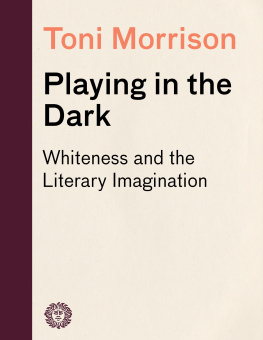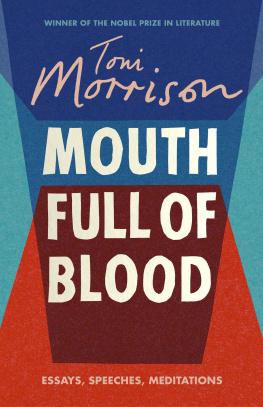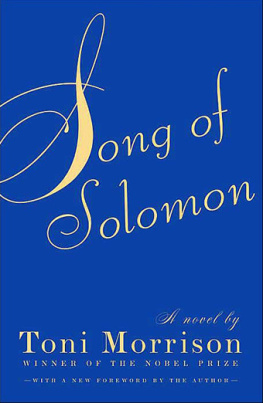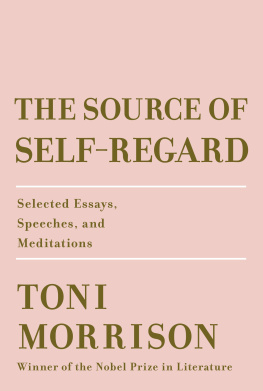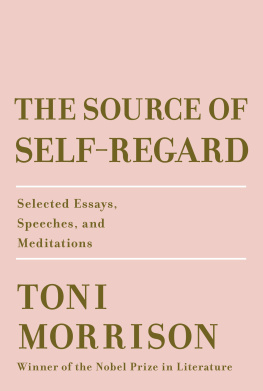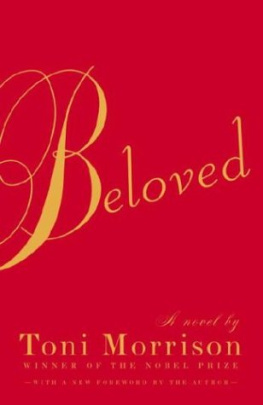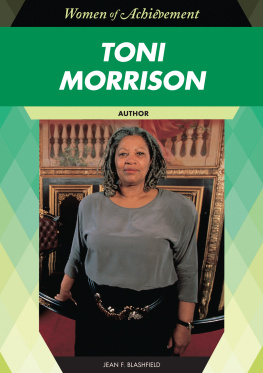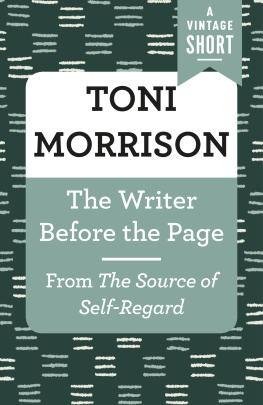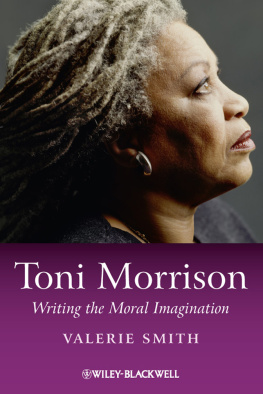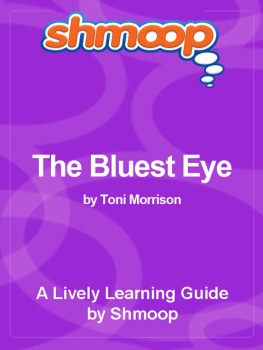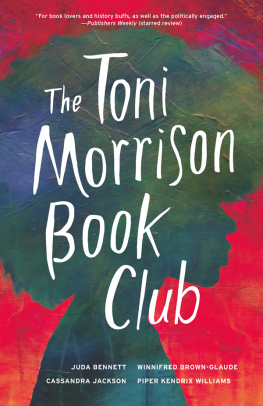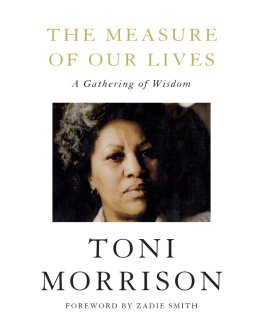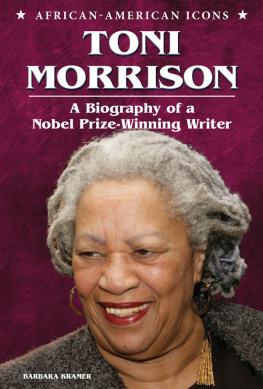Toni Morrison - Playing in the Dark: Whiteness and the Literary Imagination
Here you can read online Toni Morrison - Playing in the Dark: Whiteness and the Literary Imagination full text of the book (entire story) in english for free. Download pdf and epub, get meaning, cover and reviews about this ebook. year: 2007, publisher: Knopf Doubleday Publishing Group, genre: Art. Description of the work, (preface) as well as reviews are available. Best literature library LitArk.com created for fans of good reading and offers a wide selection of genres:
Romance novel
Science fiction
Adventure
Detective
Science
History
Home and family
Prose
Art
Politics
Computer
Non-fiction
Religion
Business
Children
Humor
Choose a favorite category and find really read worthwhile books. Enjoy immersion in the world of imagination, feel the emotions of the characters or learn something new for yourself, make an fascinating discovery.
- Book:Playing in the Dark: Whiteness and the Literary Imagination
- Author:
- Publisher:Knopf Doubleday Publishing Group
- Genre:
- Year:2007
- Rating:5 / 5
- Favourites:Add to favourites
- Your mark:
- 100
- 1
- 2
- 3
- 4
- 5
Playing in the Dark: Whiteness and the Literary Imagination: summary, description and annotation
We offer to read an annotation, description, summary or preface (depends on what the author of the book "Playing in the Dark: Whiteness and the Literary Imagination" wrote himself). If you haven't found the necessary information about the book — write in the comments, we will try to find it.
Playing in the Dark: Whiteness and the Literary Imagination — read online for free the complete book (whole text) full work
Below is the text of the book, divided by pages. System saving the place of the last page read, allows you to conveniently read the book "Playing in the Dark: Whiteness and the Literary Imagination" online for free, without having to search again every time where you left off. Put a bookmark, and you can go to the page where you finished reading at any time.
Font size:
Interval:
Bookmark:
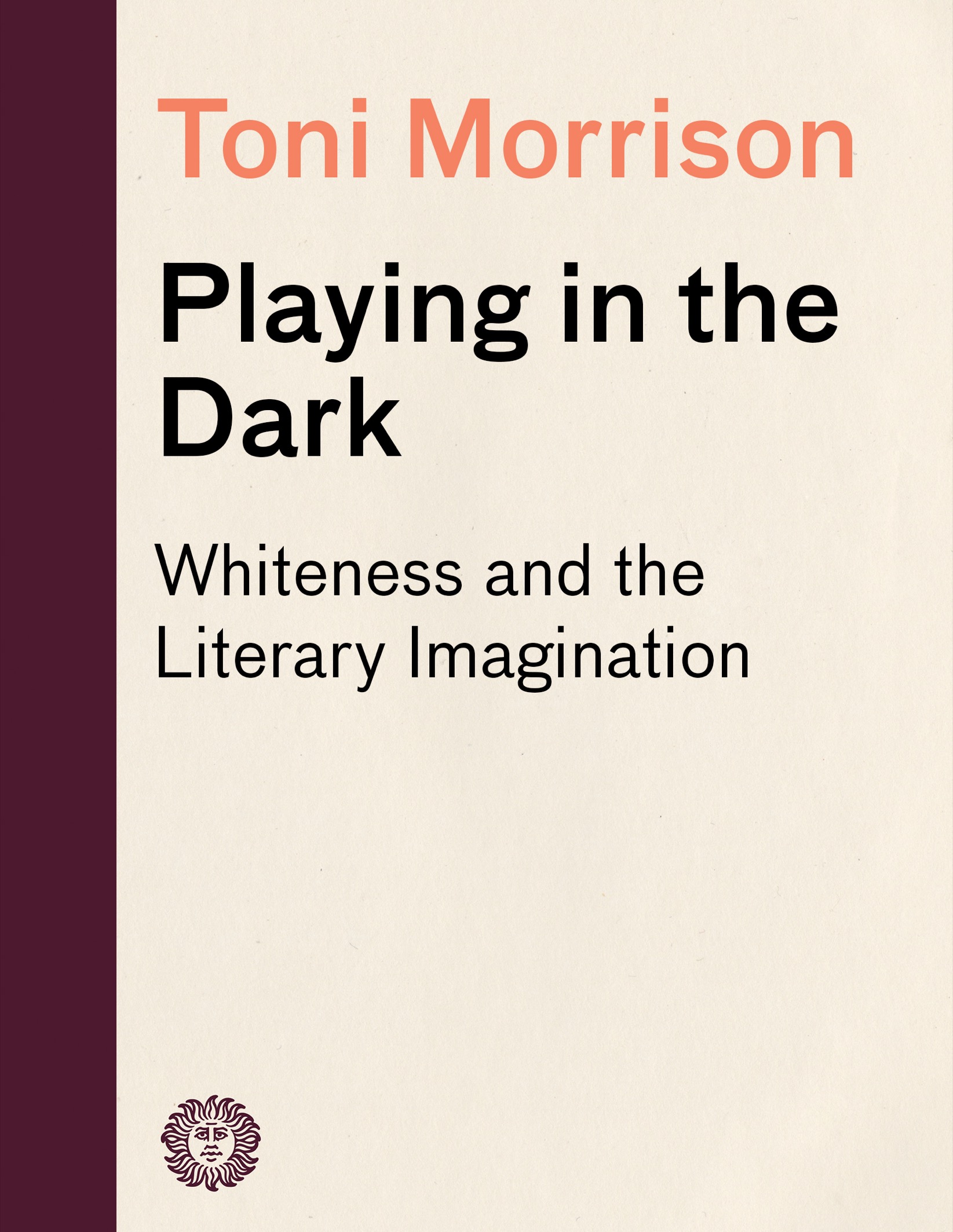
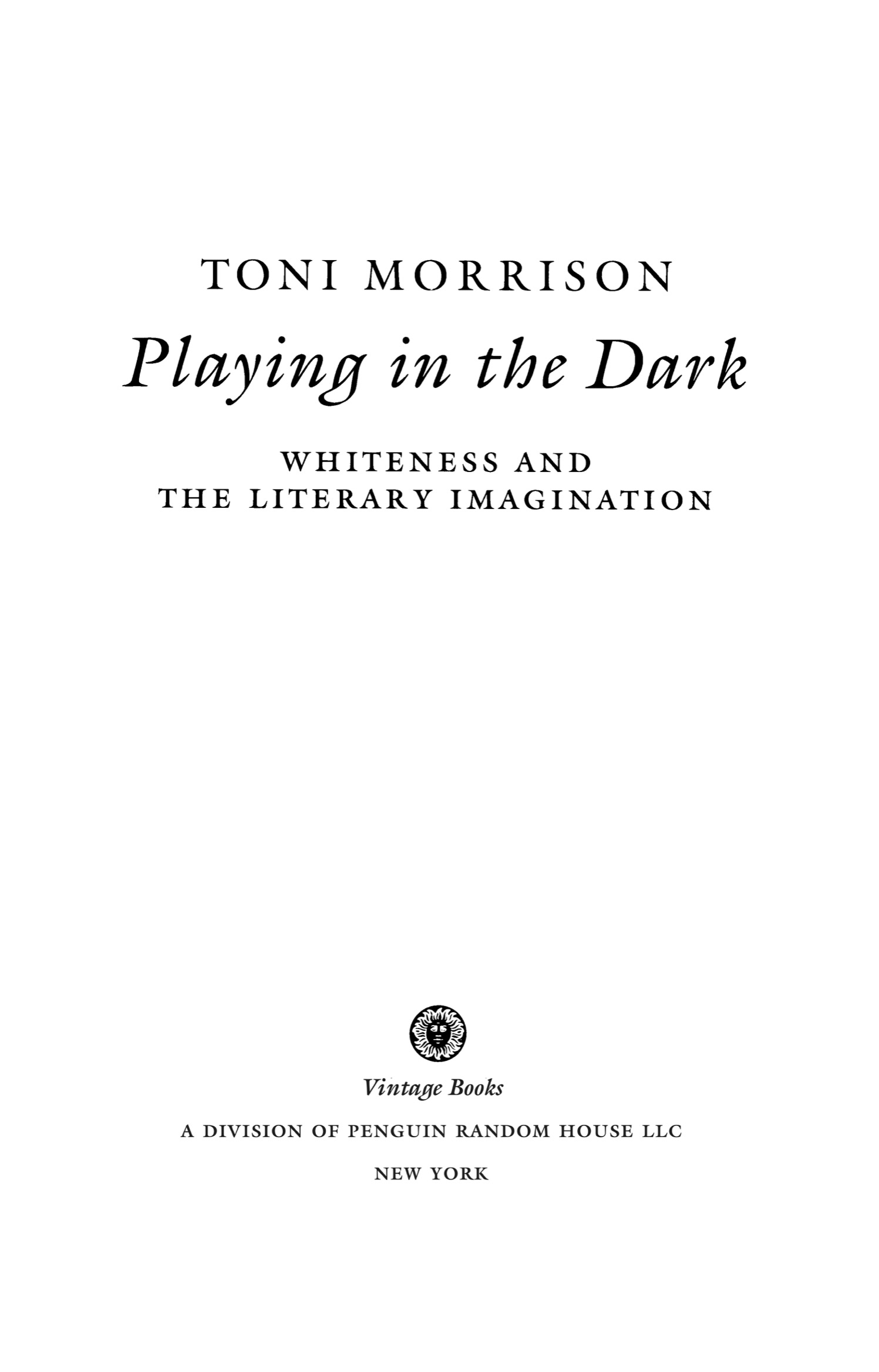
Contents
ONE
Black Matters
TWO
Romancing the Shadow
THREE
Disturbing Nurses and the Kindness of Sharks
Acclaim for TONI MORRISONS
Playing in the Dark
A profound redefinition of American cultural identity. Her method of readinginevitably revises what American literature means today.
Philadelphia Inquirer
Morrison brings the indomitable spirit of her fiction to her feelings about literature. She hits the center of an unspoken truth about American fiction and criticismabout what we take for granted, and what we ignore, in the process.
Boston Sunday Globe
A compelling dissection of U.S. fictionTo recognize the black presence in white fiction as offering both threat and reassurance permits Morrison to challenge some of the most widely accepted generalizations about our literary history. Morrisons individual readings are not just convincing, they are alarming.
San Francisco Chronicle
[Toni Morrisons] argument is lucid and eloquent; its paradigm-shattering implications are profound. This brilliant and provocative book raises questions that have never been asked about American literature and provides some compelling models for how we might go about answering them. Morrison succeeds in mapping a new critical geography for American literary study.
Journal of American History
Morrisonhopes to show the richness of investigation still available in terrain long thought to have been exhausted in earlier readings by critics unconscious of their own racialist agenda. An exuberant exercise, conducted by a writerwho knows that her own work makes steady inroads on the unspeakable.
Los Angeles Times
Essential reading for anyone interested in American literature and in the ways in which racial thinking is everywhere embedded in cultural production. Morrison is vividly sketching a new way to read American literature and enabling us to see the hard racial truths that it contains. Her argument is daring, profound and painful.
In These Times
As in her novelsthe writing is meticulously crafted, each word seemingly weighed and measured for its heft and impact. She has ventured down an avenue of critical inquiry too long neglected.
The Globe and Mail (Toronto)
A magisterial jeremiad against literary racismPlaying in the Dark is a wrenching critical enterprise.
Express Books
Brings to mind critical works by other literary artists, such as T. S. Eliots essays and D. H. Lawrences Studies in Classic American Literature.
Newsday
In Playing in the DarkMorrison again reaches for a new language, only here she seeks to expand the vocabulary of literary criticism. [She] explores how the temptation to enslave others instead of embracing freedom has shaded our national literature.
Village Voice Literary Supplement
She herself may be the last classic American writer, squarely in the tradition of Poe, Melville, Twain and Faulkner.
Newsweek
Preface
Some years ago, in 1983 I believe, I read Marie Cardinals The Words To Say It. More than the enthusiasm of the person who suggested the book, I was persuaded by the title: five words taken from Boileau that spoke the full agenda and unequivocal goal of a novelist. Cardinals project was not fictional, however; it was to document her madness, her therapy, and the complicated process of healing in language as exact and as evocative as possible in order to make both her experience and her understanding of it accessible to a stranger. The narrative into which life seems to cast itself surfaces most forcefully in certain kinds of psychoanalysis, and Cardinal proves herself ideal in rendering this deep story aspect of her life. She has written several books, won the Prix International, taught philosophy, and, during her journey into health, admits that she always planned someday to write about it.
It is a fascinating book and, although I was skeptical at first of its classification as autobiographical novel, the accuracy of the label quickly becomes apparent. It is shaped quite as novels most frequently are with scenes and dialogue selectively ordered and situated to satisfy conventional narrative expectations. There are flashbacks, well-placed descriptive passages, carefully paced action, and timely discoveries. Clearly her preoccupations, her strategies, and her efforts to make chaos coherent are familiar to novelists.
From the beginning I found one question insisting itself: when precisely did the author know she was in trouble? What was the narrative moment, the specular even spectacular scene that convinced her that she was in danger of collapse? Less than forty pages into the book she describes that moment, her first encounter with the Thing.
My first anxiety attack occurred during a Louis Armstrong concert. I was nineteen or twenty. Armstrong was going to improvise with his trumpet, to build a whole composition in which each note would be important and would contain within itself the essence of the whole. I was not disappointed: the atmosphere warmed up very fast. The scaffolding and flying buttresses of the jazz instruments supported Armstrongs trumpet, creating spaces which were adequate enough for it to climb higher, establish itself, and take off again. The sounds of the trumpet sometimes piled up together, fusing a new musical base, a sort of matrix which gave birth to one precise, unique note, tracing a sound whose path was almost painful, so absolutely necessary had its equilibrium and duration become; it tore at the nerves of those who followed it.
My heart began to accelerate, becoming more important than the music, shaking the bars of my rib cage, compressing my lungs so the air could no longer enter them. Gripped by panic at the idea of dying there in the middle of spasms, stomping feet, and the crowd howling, I ran into the street like someone possessed.
I remember smiling when I read that, partly in admiration of the clarity in her recollection of the musicits immediacypartly because of what leaped into my mind: what on earth was Louie playing that night? What was there in his music that drove this sensitive young girl hyperventilating into the street to be struck by the beauty and ravage of a camellia svelte in appearance but torn apart inside?
Enunciating that incident was crucial in the launching of her therapy, but the imagery that worked as a catalyst for her anxiety attack goes unremarkedby her, by her analyst, and by the eminent doctor, Bruno Bettelheim, who wrote both the Preface and the Afterword. None of them is interested in what ignited her strong apprehension of death (Im going to die! is what she was thinking and screaming), of physical power out of control (nothing could appease me. And so I continued to run), as well as this curious flight from the genius of improvisation, sublime order, poise, and the illusion of permanence. The one precise, unique note, tracing a sound whose path was almost painful, so absolutely necessary had its equilibrium and duration become; it tore at the nerves of those [other than Armstrong, apparently] who followed it [italics mine]. Unbearable equilibrium and duration; nerve-wracking balance and permanence. These are wonderful tropes for the illness that was breaking up Cardinals life. Would an Edith Piaf concert or a Dvorak composition have had the same effect? Certainly either could have. What solicited my attention was whether the cultural associations of jazz were as important to Cardinals possession as were its intellectual foundations. I was interested, as I had been for a long time, in the way black people ignite critical moments of discovery or change or emphasis in literature not written by them. In fact I had started, casually like a game, keeping a file of such instances.
Font size:
Interval:
Bookmark:
Similar books «Playing in the Dark: Whiteness and the Literary Imagination»
Look at similar books to Playing in the Dark: Whiteness and the Literary Imagination. We have selected literature similar in name and meaning in the hope of providing readers with more options to find new, interesting, not yet read works.
Discussion, reviews of the book Playing in the Dark: Whiteness and the Literary Imagination and just readers' own opinions. Leave your comments, write what you think about the work, its meaning or the main characters. Specify what exactly you liked and what you didn't like, and why you think so.

